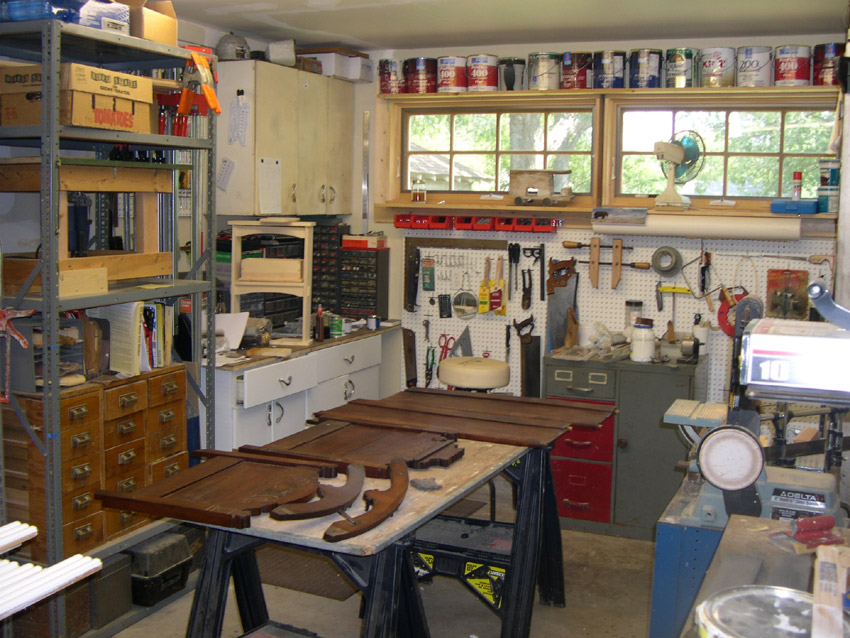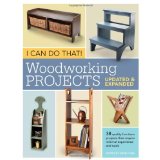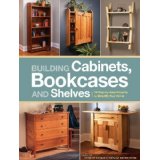10 Safety Rules Every Woodworker Should Know
Follow These Woodshop Safety Rules Every Time!
Woodworking can be a safe and enjoyable hobby or vocation, IF you follow some very basic woodworking safety rules.
All of the rules are common-sense ideas, but failure to follow these rules will greatly increase the chance of injury when working with your tools. The wood shop is not the place to be in a hurry or have an "it won't happen to me" attitude.
Commit these ten rules to habit, and your woodworking experiences will be safer and much more enjoyable.
1. Always Wear Safety Equipment
The first and most important rule of woodworking is to wear appropriate safety equipment. While hearing protection is necessary for some very noisy tools such as routers and surface planers, and latex gloves may be necessary when applying finishes, there is no time in the wood shop that you should be without your safety glasses.
Put them on when you enter the shop, and don't take them off until you leave. Your eyesight is too important to take chances.
Sanders, routers and other power tools can generate a lot of dust. When using these tools, it is a good idea to wear a dust mask, to keep these fine particles from entering your lungs. When spraying varnish or paint, a respirator is a better choice, to protect you from any harmful effects of using these chemicals.
2. Go slow
Speed is perhaps the biggest culprit for accidents all around. Being in a hurry can make you forget an important step, cause damage to your project and more importantly cause an injury to you.
Also results are also typically better, the cuts more neat and accurate, and your tools stay in good shape for longer when you use them with care .
3. Stay fresh and sober
Do not operate machinery or even use hands tools when your mind is dull. Anytime you feed tired, take a break or call it a day, as tempting as it might be to finish the project then and there.
Lack of concentration results in most of the accidents in the woodshop. As for staying sober, this needs no further explanation. You should never operate any kind of machine in an inabereated state of mind . If your senses are dull in any manner, stay out of your woodshop.
Always stay aware and alert and away from any substance that makes you delirious, even if it’s coffee !
4. Disconnect Power Before Blade Changes
Whenever you need to change a blade or bit on a power tool, always disconnect the electricity to the power tool before even beginning the blade change. (Don't just check to see that the switch is off, as a switch could get bumped or malfunction.)
Many a woodworker has lost fingers (or worse) by forgetting this simple but very important rule. I've seen woodworkers even go as far as to affix the wrenches to the power cables so there is NO chance they'll forget to disconnect the power.
5. Try Using One Extension Cord
Here's a tip I've used regularly in the past. For all 110-volt power tools in the shop, I use one heavy-duty extension cord. Not one per tool, but one TOTAL.
This way, I'm forced to switch the cord from tool to tool before the tool can be used. In this manner, you are always remembering to plug and unplug the power when moving from one tool to another, and you'll be more cognizant of the need to disconnect the power when making bit or blade changes.
6. Use Sharp Blades & Bits
This one seems like a no-brainer, but a dull cutting tool is a dangerous tool.
If a saw blade is not as sharp as it ideally should be, the tool and the woodworker will have to work harder to complete the desired task. In such cases, the tool will be more likely to kick-back or bind. Besides, a sharper cutting tool will produce a cleaner cut, so there are more than just safety advantages here. Keep the blade sharp and clean of pitch, and you'll be safer and have better results.
7. Always Check for Nails, Screws and Other Metal
Another no-brainer tip which doesn't bear mentioning, so that's why I'm going to mention it: Always check the stock you're preparing to cut for any metal (nails, screws, staples, etc.) before beginning a cut. Nails and rapidly spinning saw blades are not a good mix.
Not only can this damage the cutting head and the stock, but at the very minimum, can cause the stock to kick back, which is a common cause of injury. Inspect the stock (or better yet, use a metal detector) before cutting.
8. Always Work Against the Cutter
Woodworking Power Tools are designed so that the direction that the wood moves through the tool (or the direction that the tool moves across the wood) is in the opposite direction of the movement of the cutting head.
In other words, a router bit or saw blade should cut against the motion and not with it. The cutter should cut into the stock, not with the stock.
9. Never Reach Over a Blade to Remove Cut-Offs
When working on a Table Saw, Miter Saw, etc., never put your hands anywhere near the moving blade, especially when attempting to remove waste or cut-offs.
Wait until the blade has stopped moving and THEN reach for the cut-off. Better yet, once the saw blade has stopped, use a piece of scrap or a push stick to move the waste away from the blade. Remember that switches can be inadvertently bumped or malfunction, so just because the blade has stopped, don't relax and put your hands too close.
10. Avoid Distractions
Distractions are a part of everyday life, and working in the wood shop is no different.
When you are summoned or distracted while in the middle of performing an action with a power tool, remember to always finish the cut to a safe conclusion before dealing with the distraction. Taking your attention away from the woodworking tool is a recipe for disaster.

Copyright TedsWoodworking.com All Rights Reserved.
Privacy - Terms - Anti-Spam - DMCA - Affiliates








